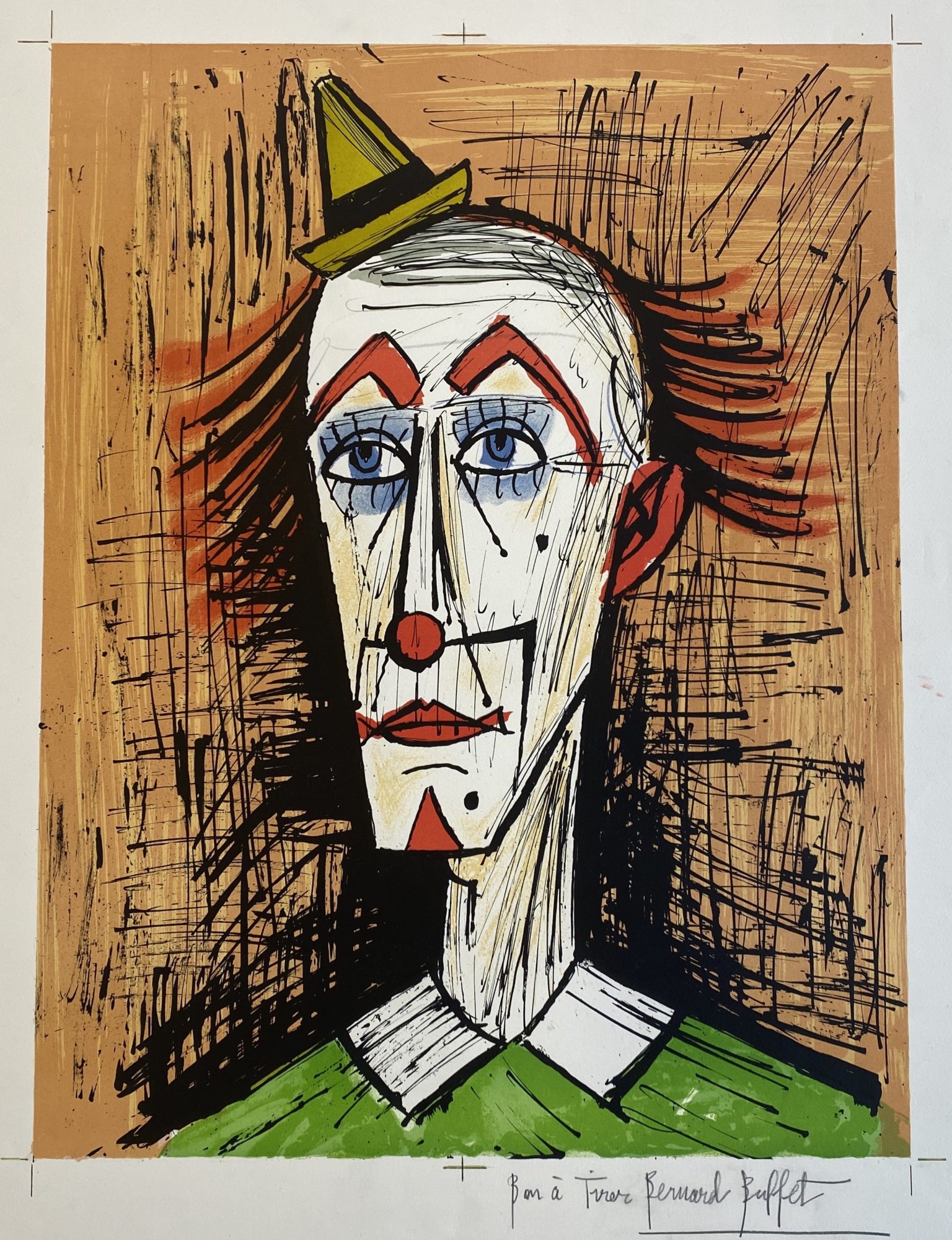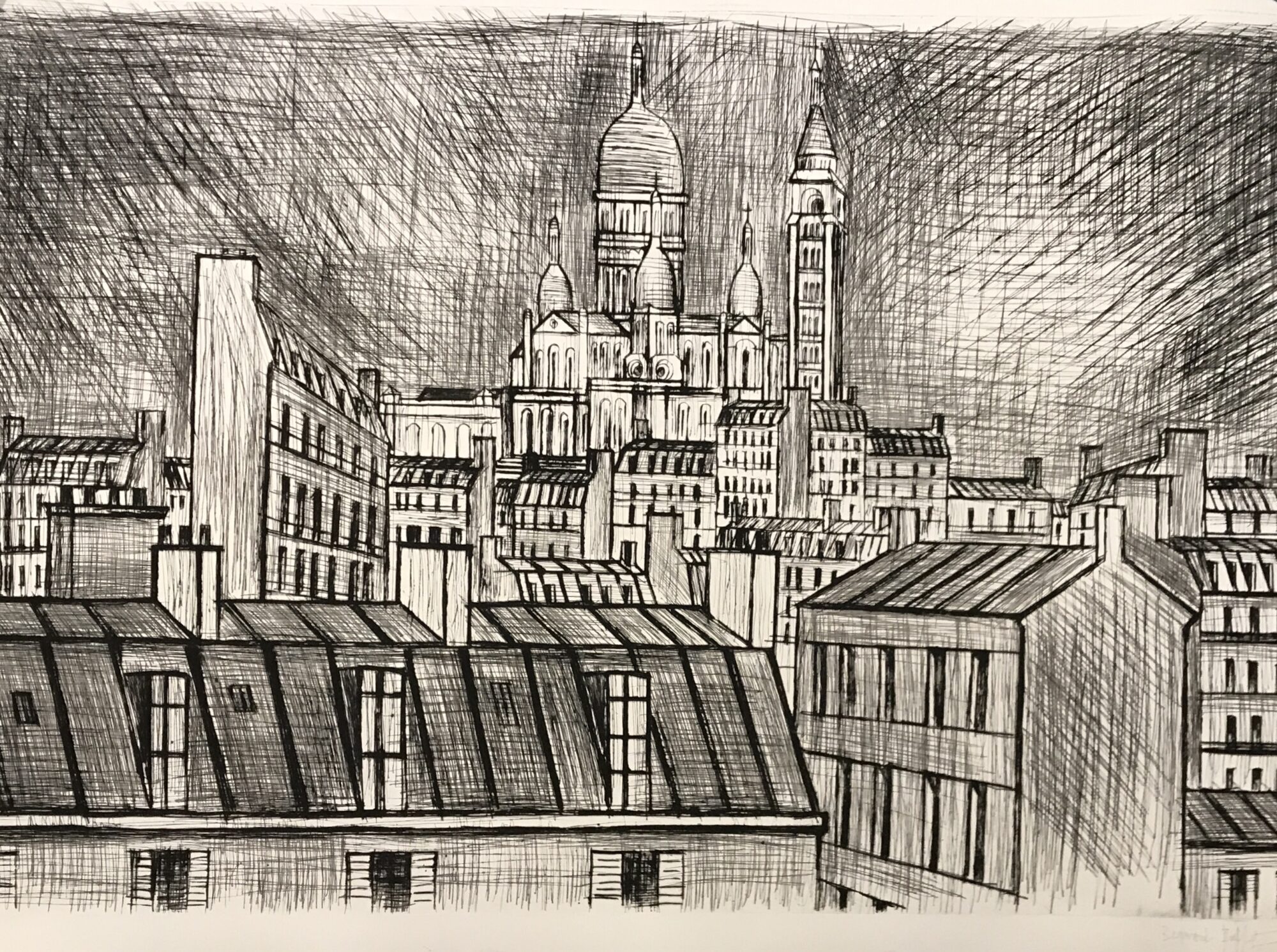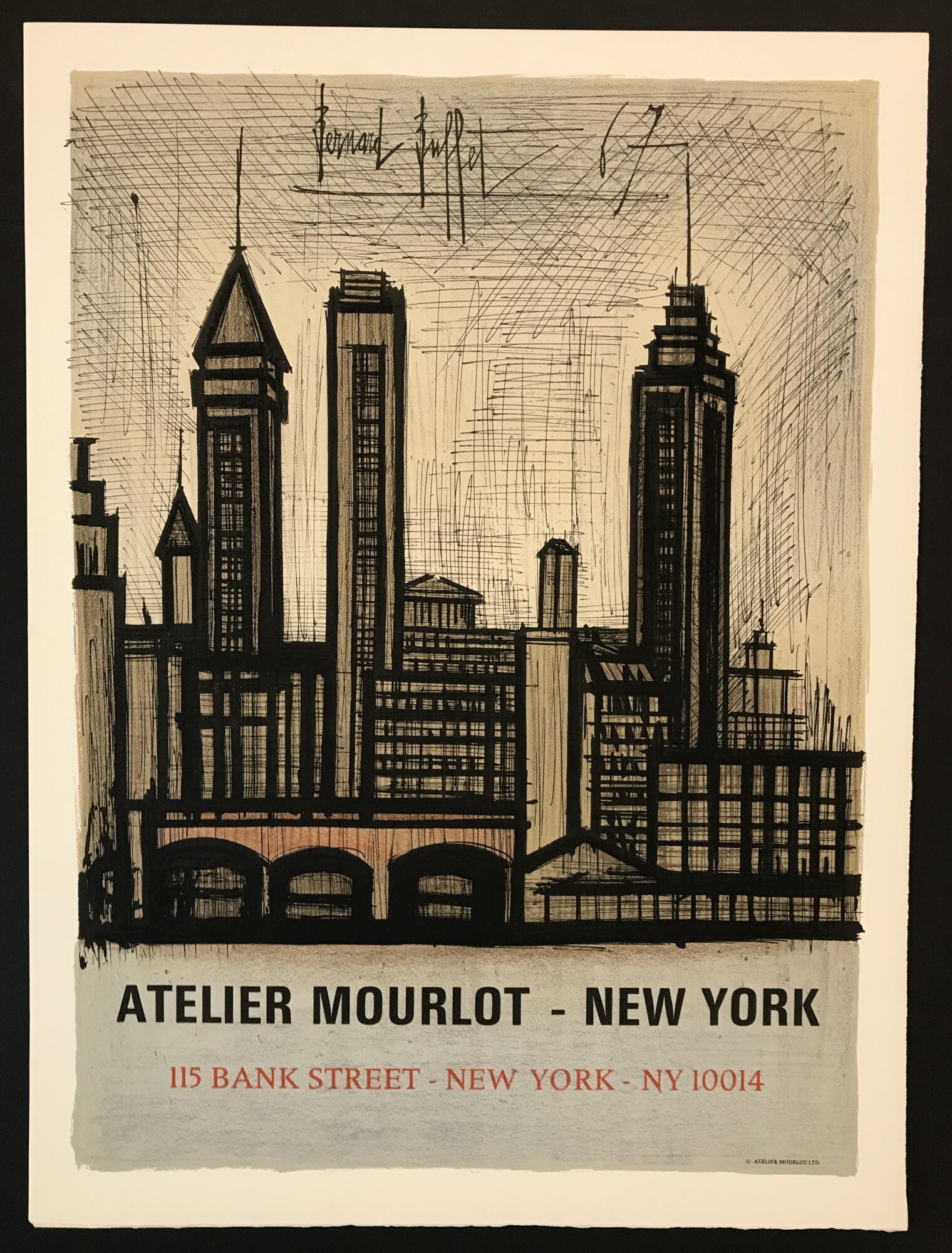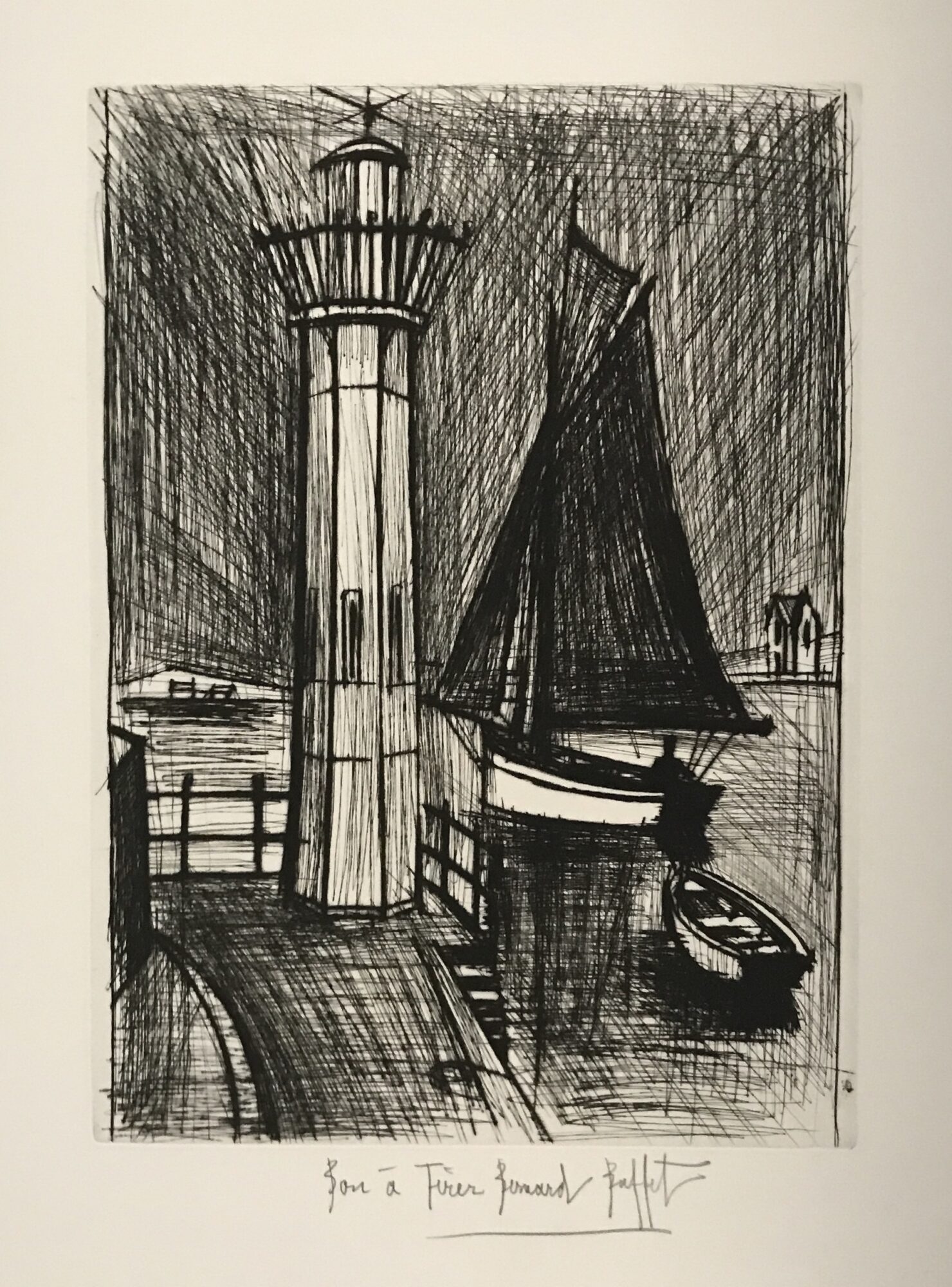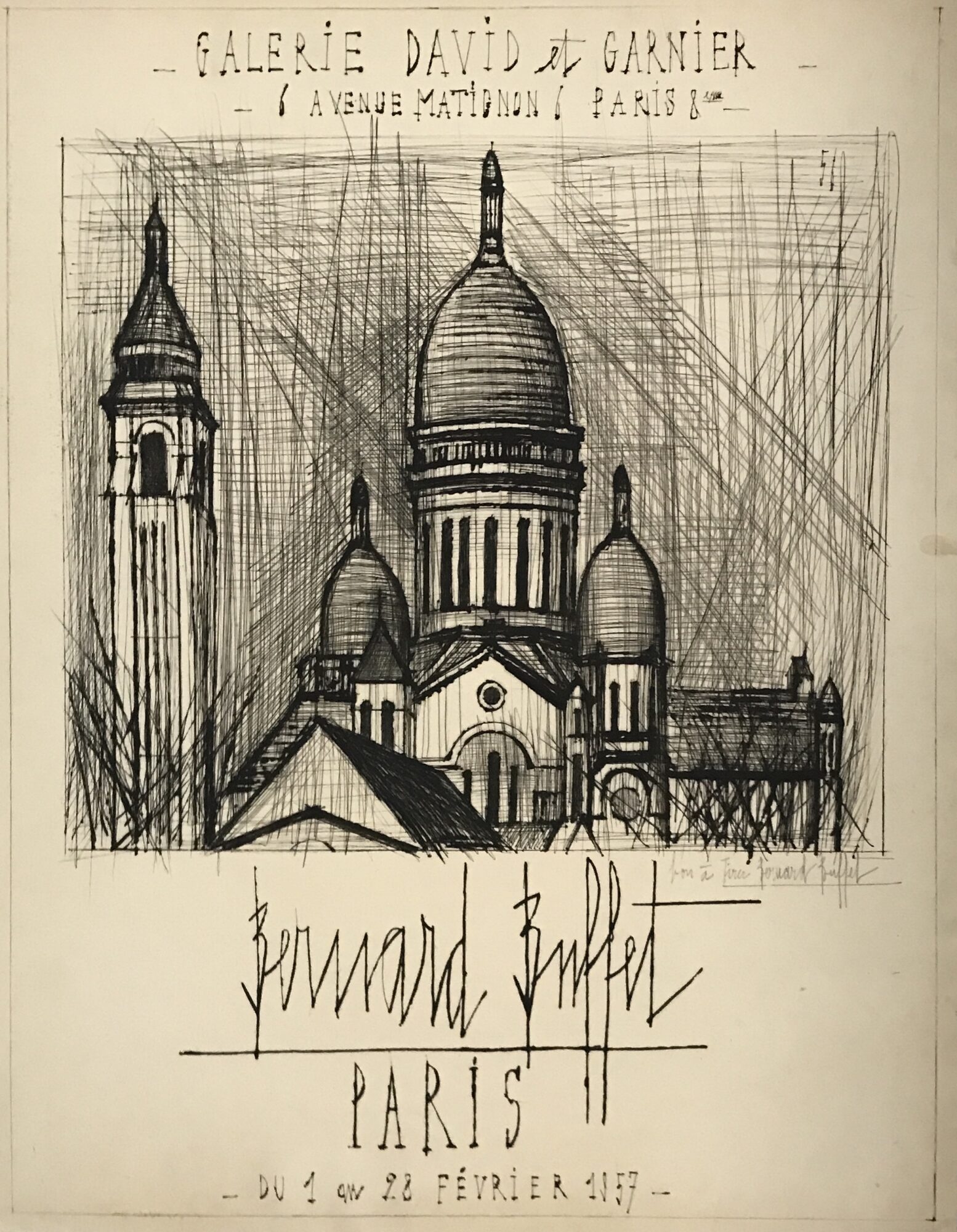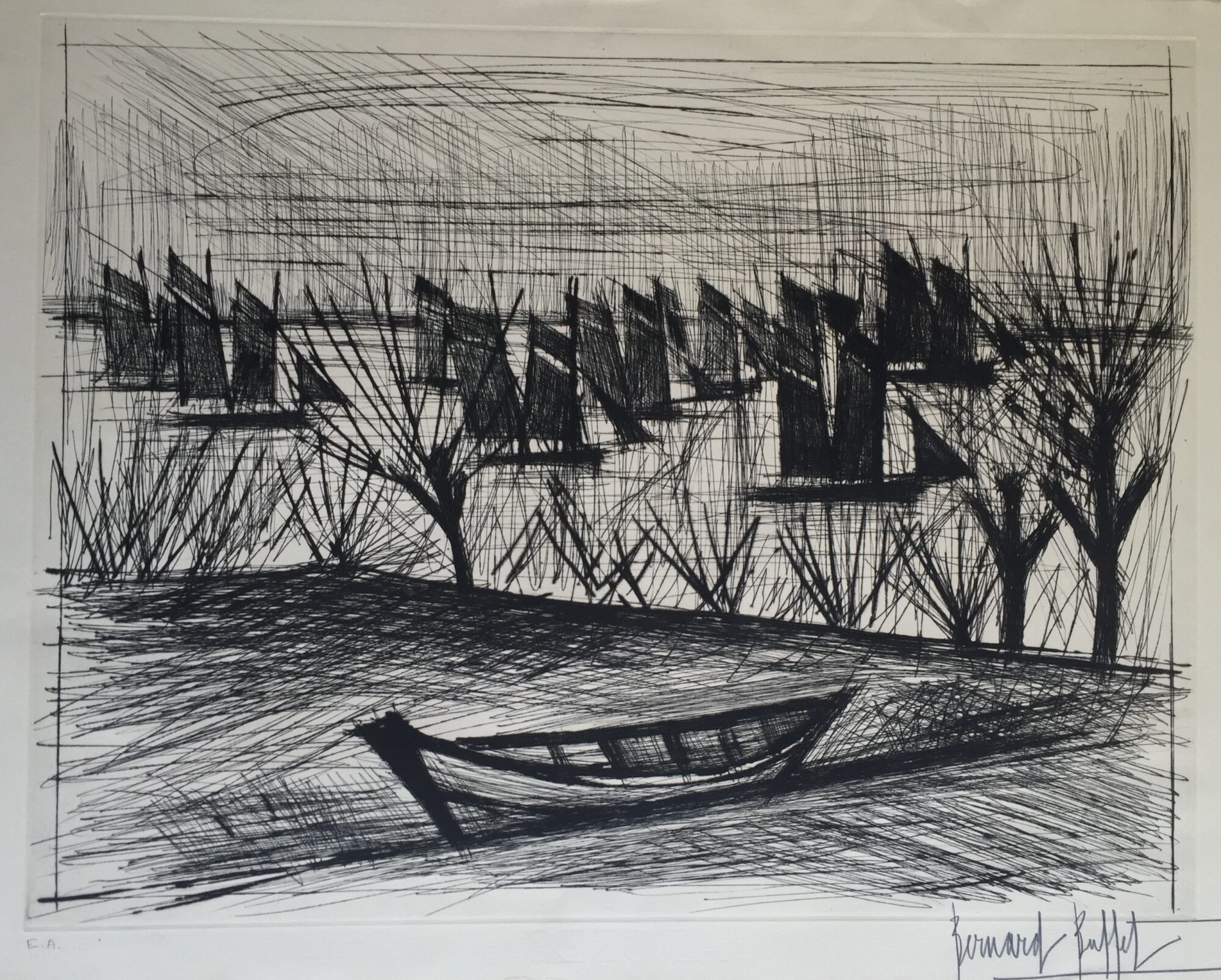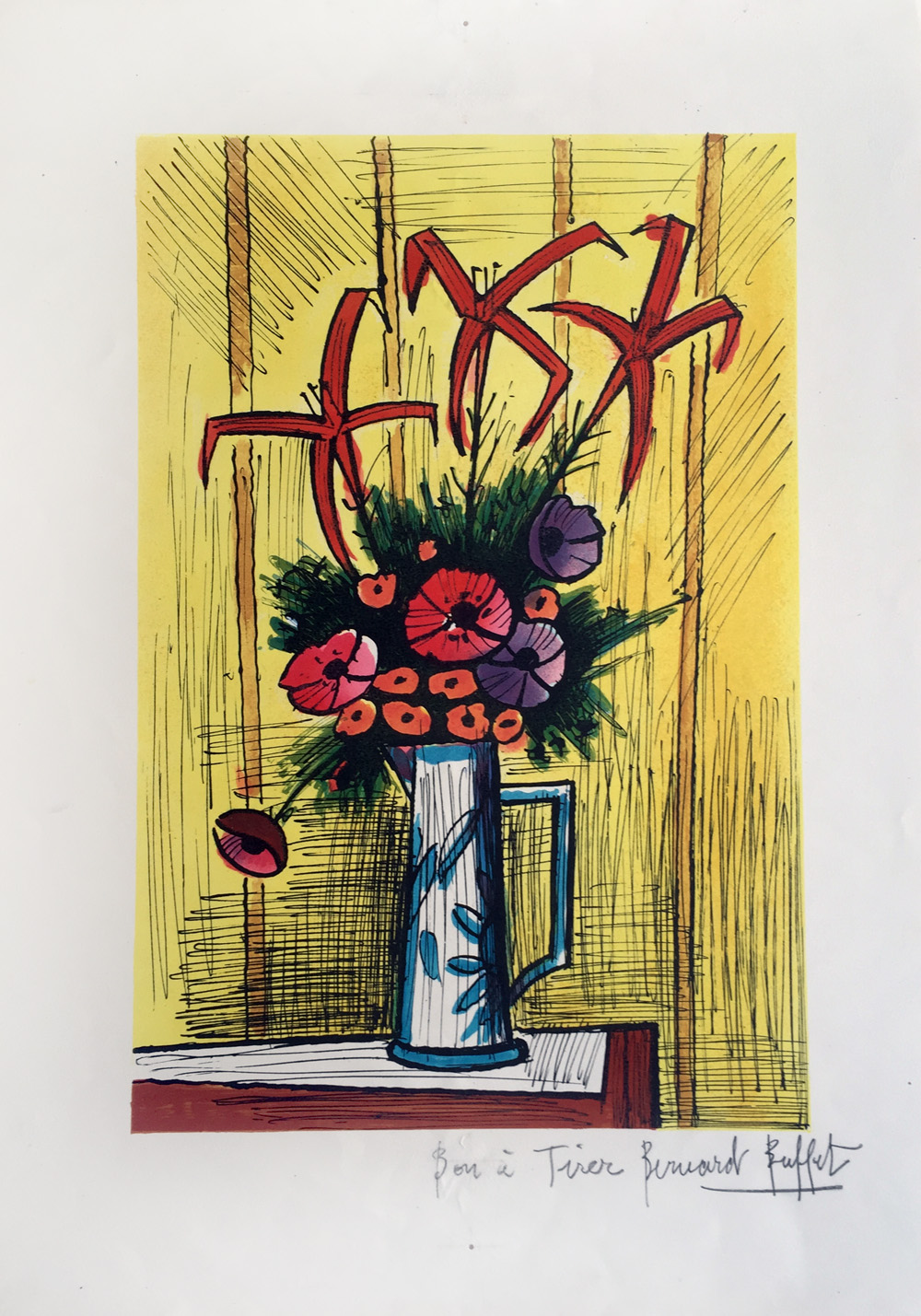Bernard Buffet – Clown au petit chapeau
Bernard Buffet, Clown au petit chapeau is an original Lithograph made in 1995. It is signed and annotated “Bon a Tirer” in pencil lower right. Image Size: 25 1/2 x 19 3/4 inches.
Buffet’s oeuvre is graphic; with his most iconic renderings being of tall and elongated, sorrowful clowns. The zenith of the “Clown” series was during the 1950s. Formulated at a time when society was just recovering from the Second World War, the subject proved to be extremely powerful. The masked characters were estranged and enigmatic, capturing the unease and distress of the French people during the post-war period. Buffet adopts a classic composition for portraits and the artist seems to purposefully leave the character’s disposition a mystery. His clowns don a comical appearance, and yet their eyes look equivocal and empty.
When asked why the character would be favoured as a repeated focus of his paintings, Buffet answered, “The clown can indulge himself with all sorts of disguises and caricatures.” The depiction of the clown was a way for the artist to embrace and express freedom, and the canvas allowed him space to breathe within the harshness of reality. To put on mask after mask was to cope with the dreariness of social existence. In Nicholas Foulkes’ new biography, Bernard Buffet: The Invention of the Modern Mega-Artist, the art historian notes: “It is often said that when Buffet painted a face, whether human of animal, he was painting a self-portrait. While not entirely true, there is no doubt that he used his own features as the basis for some of his clown paintings.”
| Title | Clown au petit chapeau |
|---|---|
| Alt. Title | Clown in little hat |
| Year | 1995 |
| Medium | Lithograph |
| Edition | Bon a Tirer |
| Signature | Signed, annotated |
| Size | 33 x 25 (in) 84 x 64 (cm) |
| Price | SOLD |
Description
Bernard Buffet, Clown au petit chapeau is an original Lithograph made in 1995. It is signed and annotated “Bon a Tirer” in pencil lower right. Image Size: 25 1/2 x 19 3/4 inches.
Buffet’s oeuvre is graphic; with his most iconic renderings being of tall and elongated, sorrowful clowns. The zenith of the “Clown” series was during the 1950s. Formulated at a time when society was just recovering from the Second World War, the subject proved to be extremely powerful. The masked characters were estranged and enigmatic, capturing the unease and distress of the French people during the post-war period. Buffet adopts a classic composition for portraits and the artist seems to purposefully leave the character’s disposition a mystery. His clowns don a comical appearance, and yet their eyes look equivocal and empty.
When asked why the character would be favoured as a repeated focus of his paintings, Buffet answered, “The clown can indulge himself with all sorts of disguises and caricatures.” The depiction of the clown was a way for the artist to embrace and express freedom, and the canvas allowed him space to breathe within the harshness of reality. To put on mask after mask was to cope with the dreariness of social existence. In Nicholas Foulkes’ new biography, Bernard Buffet: The Invention of the Modern Mega-Artist, the art historian notes: “It is often said that when Buffet painted a face, whether human of animal, he was painting a self-portrait. While not entirely true, there is no doubt that he used his own features as the basis for some of his clown paintings.”
Additional information
| Title | Clown au petit chapeau |
|---|---|
| Alt. Title | Clown in little hat |
| Year | 1995 |
| Medium | Lithograph |
| Edition | Bon a Tirer |
| Signature | Signed, annotated |
| Size | 33 x 25 (in) 84 x 64 (cm) |
| Price | SOLD |


